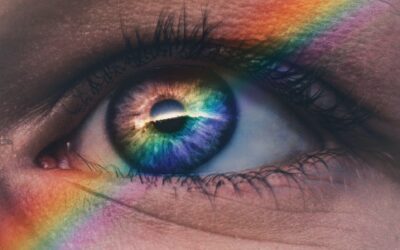When you receive an eye examination, you often leave with a copy of your prescription, which includes numbers for the exact specifications of the glasses you need. These numbers include the sphere, the cylinder, and the axis.
Sphere, cylinder, and axis can also all be broken down into different categories. Read on to learn about these specifications.
Sphere is the first number on your glasses prescription
The sphere power is the first number in the prescription and specifies the overall type and amount of power in the lens. It can be positive, indicating a hyperopic or farsighted prescription, negative, indicating a myopic or nearsighted prescription, or it can be zero.
If you have a farsighted prescription, your eyes have an easier time focusing far away and need some extra power for seeing things up close.
If you have a small to moderate number, you may have gone most of your life without needing glasses and only start requiring them when the focusing system inside your eyes begins to noticeably decrease in power (presbyopia).
For a nearsighted (ie: myopic) prescription, the eyes are naturally adapted to see at near without spectacles but require diverging power to make distant objects clear.
For low myopic prescriptions, you might only want your glasses or contact lenses to drive or see a movie, while for higher prescriptions, you pretty much need your glasses for everything you do.
The cylinder power is used to correct astigmatism
The second number is the magnitude of the cylinder power, which is used to correct astigmatism. It is usually specified in minus form, but can be converted to plus form by changing the entire prescription to an equivalent format.
Astigmatism is when the eye requires different powers in different orientations to see clearly, owing to its bending light like a football rather than a soccer ball: one direction with much more curvature than the other.
This can also be imagined in that someone with uncorrected astigmatism might see the vertical part of a capital letter L as perfectly clear while the lower horizontal part of it is blurry, or vice versa in any direction.
Everyone usually has a little bit of astigmatism, but some people may have none at all. Astigmatism is also not directly related to the amount of sphere power: you can have zero sphere power and a lot of cylinder power which still requires you to wear your spectacles or contact lenses.
The axis determines where to put the astigmatism in your glasses
The axis is the final number and is written as an angle made of three digits without the extra degree sign usually put in geometric angles.
This specifies the direction of the astigmatism correction, as it is a line that can be any degree or orientation from 180 degrees (a straight line left and right) to 90 degrees (a straight line up and down) and anywhere in between these.
The axis can be specified as with the rule (close to a flat horizontal line), against the rule (close to a straight vertical line), or oblique (somewhere in between these, close to a 45 or 135 degree angle).
As we age, we tend to move from with the rule astigmatism as children to against the rule as elderly.





